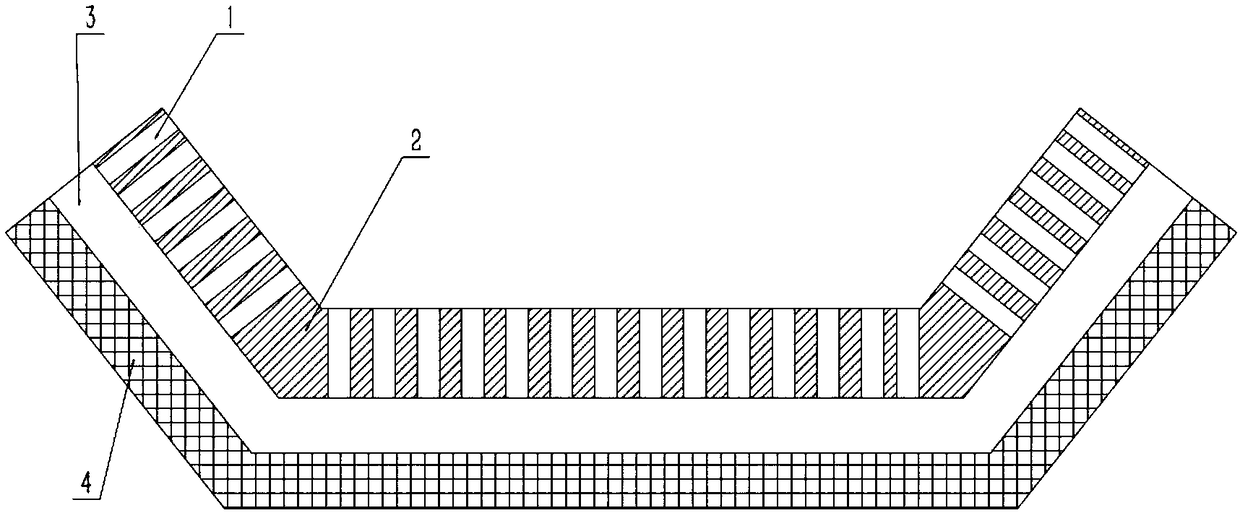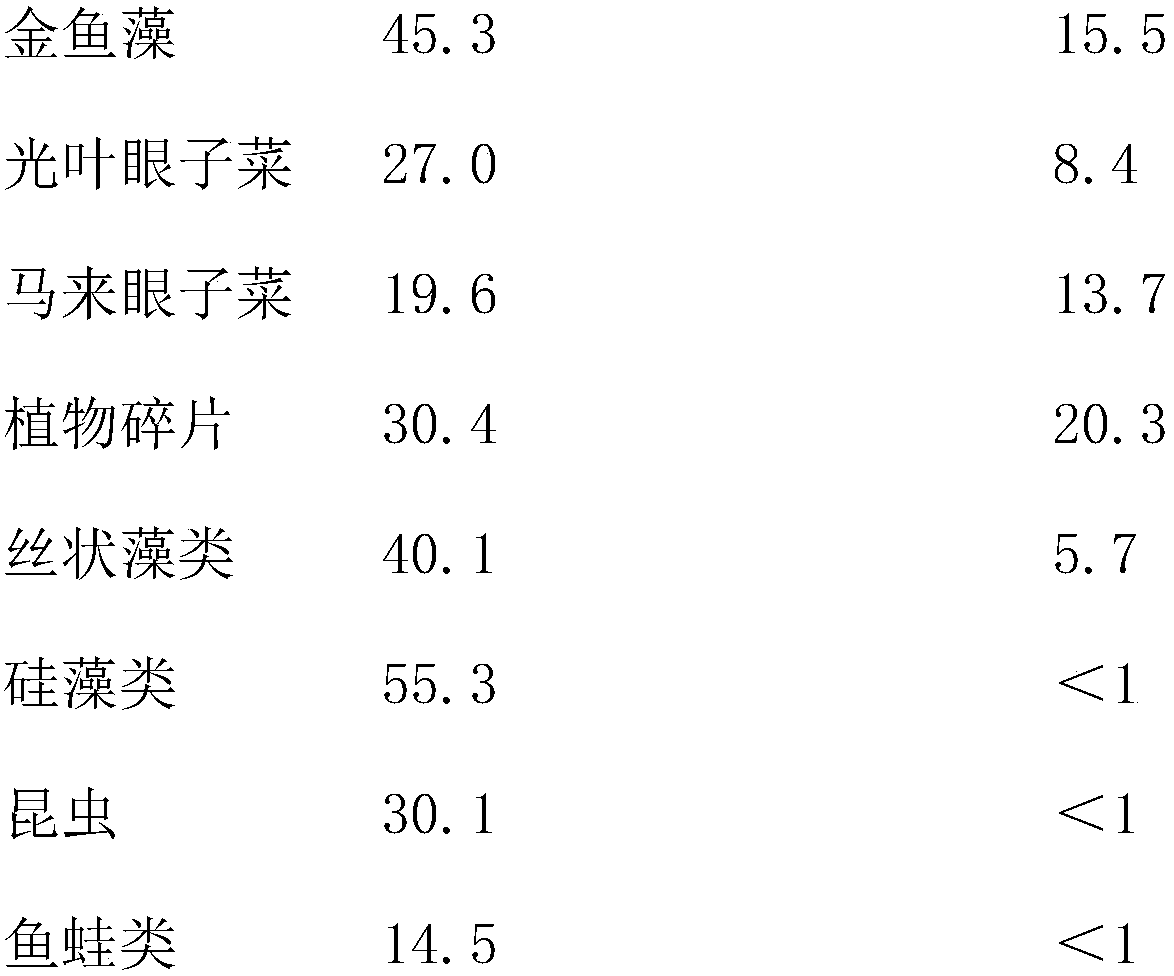Fresh-water benign ecologic lobster breeding method
A technology of ecological breeding and freshwater lobster, which is applied in fish farming, climate change adaptation, animal feed, etc., can solve the problems of cannibalism, decreased survival rate, high density, etc., to improve the survival rate, increase the survival rate, and increase income Effect
- Summary
- Abstract
- Description
- Claims
- Application Information
AI Technical Summary
Problems solved by technology
Method used
Image
Examples
Embodiment 1
[0029] Such as figure 1 Shown, freshwater lobster benign ecological breeding method comprises the steps:
[0030] Step 1: Select a breeding pond with sufficient water source and long sunlight time;
[0031] Step 2: Rebuild the aquaculture pond, drain the pond water, remove the silt until the hard mud layer 4, form a 45° slope on both sides of the pond, after disinfection and exposure in the pond, lay a gravel layer 3 on the hard mud layer 4, and lay the gravel layer 3 on the hard mud layer 4 Fixing the juvenile shrimp protection layer 1, the juvenile shrimp protection layer 1 is formed with a through hole 2 that only allows the juvenile shrimp to pass through, and the juvenile shrimp protection layer 1 is covered with a mud layer;
[0032] Step 3: Cultivate aquatic plants. Select the water source in the breeding pond before sunrise in late spring. The depth of the water body is 2 / 3 of the depth of the pond. At the bottom of the pond, cultivate 1 / 4 of the bottom area of subm...
Embodiment 2
[0048] Such as figure 1 Shown, freshwater lobster benign ecological breeding method comprises the steps:
[0049] Step 1: Select a breeding pond with sufficient water source and long sunlight time;
[0050] Step 2: Rebuild the aquaculture pond, drain the pond water, remove the silt until the hard mud layer 4, and form a 47° slope on both sides of the pond. After disinfection and exposure in the pond, lay the gravel layer 3 on the hard mud layer 4, and lay the gravel layer 3 on the hard mud layer 4 Fixing the juvenile shrimp protection layer 1, the juvenile shrimp protection layer 1 is formed with a through hole 2 that only allows the juvenile shrimp to pass through, and the juvenile shrimp protection layer 1 is covered with a mud layer;
[0051] Step 3: Cultivate aquatic plants. Select the water source in the breeding pond before sunrise in late spring. The depth of the water body is 2 / 3 of the depth of the pond. At the bottom of the pond, cultivate 1 / 4 of the bottom area of ...
Embodiment 3
[0067] Such as figure 1 Shown, freshwater lobster benign ecological breeding method is characterized in that: comprises the steps:
[0068] Step 1: Select a breeding pond with sufficient water source and long sunlight time;
[0069] Step 2: Rebuild the aquaculture pond, drain the pond water, remove the silt until the hard mud layer 4, form a 50° slope on both sides of the pond, after disinfection and exposure in the pond, lay a gravel layer 3 on the hard mud layer 4, and lay the gravel layer 3 on the hard mud layer 4 Fixing the juvenile shrimp protection layer 1, the juvenile shrimp protection layer 1 is formed with a through hole 2 that only allows the juvenile shrimp to pass through, and the juvenile shrimp protection layer 1 is covered with a mud layer;
[0070] Step 3: Cultivate aquatic plants. Select the water source in the breeding pond before sunrise in late spring. The depth of the water body is 2 / 3 of the depth of the pond. At the bottom of the pond, cultivate 1 / 4 of...
PUM
 Login to View More
Login to View More Abstract
Description
Claims
Application Information
 Login to View More
Login to View More - R&D
- Intellectual Property
- Life Sciences
- Materials
- Tech Scout
- Unparalleled Data Quality
- Higher Quality Content
- 60% Fewer Hallucinations
Browse by: Latest US Patents, China's latest patents, Technical Efficacy Thesaurus, Application Domain, Technology Topic, Popular Technical Reports.
© 2025 PatSnap. All rights reserved.Legal|Privacy policy|Modern Slavery Act Transparency Statement|Sitemap|About US| Contact US: help@patsnap.com



